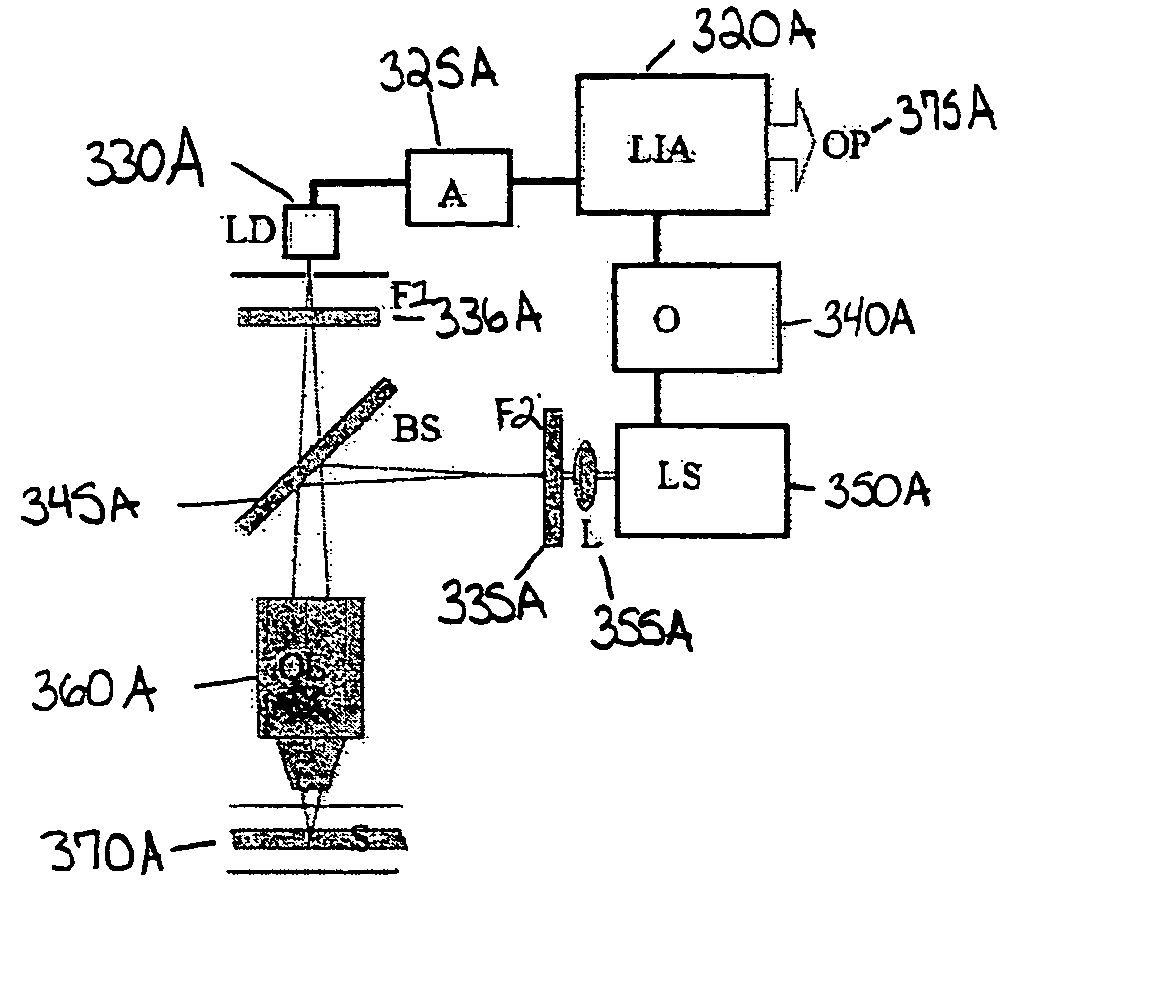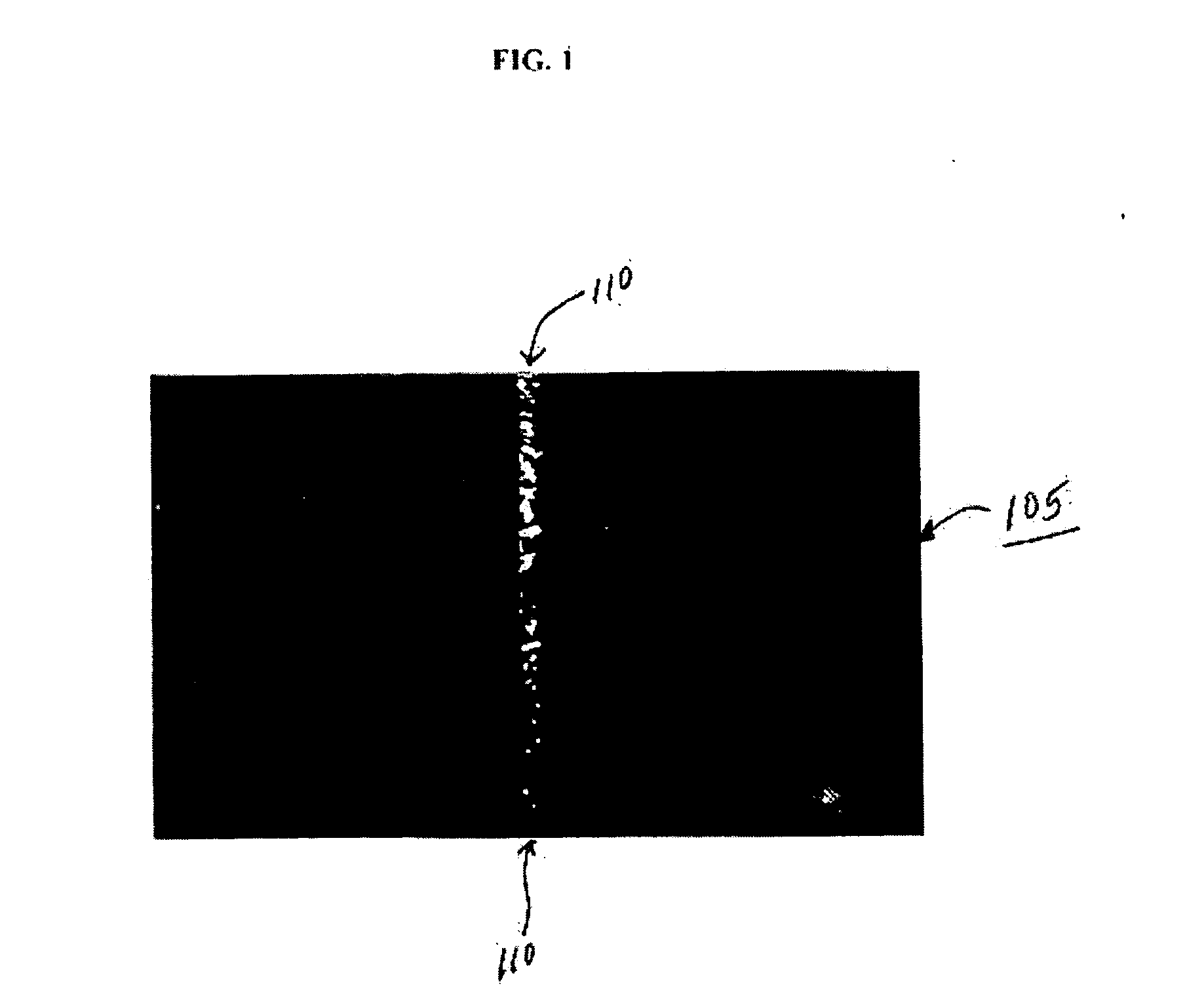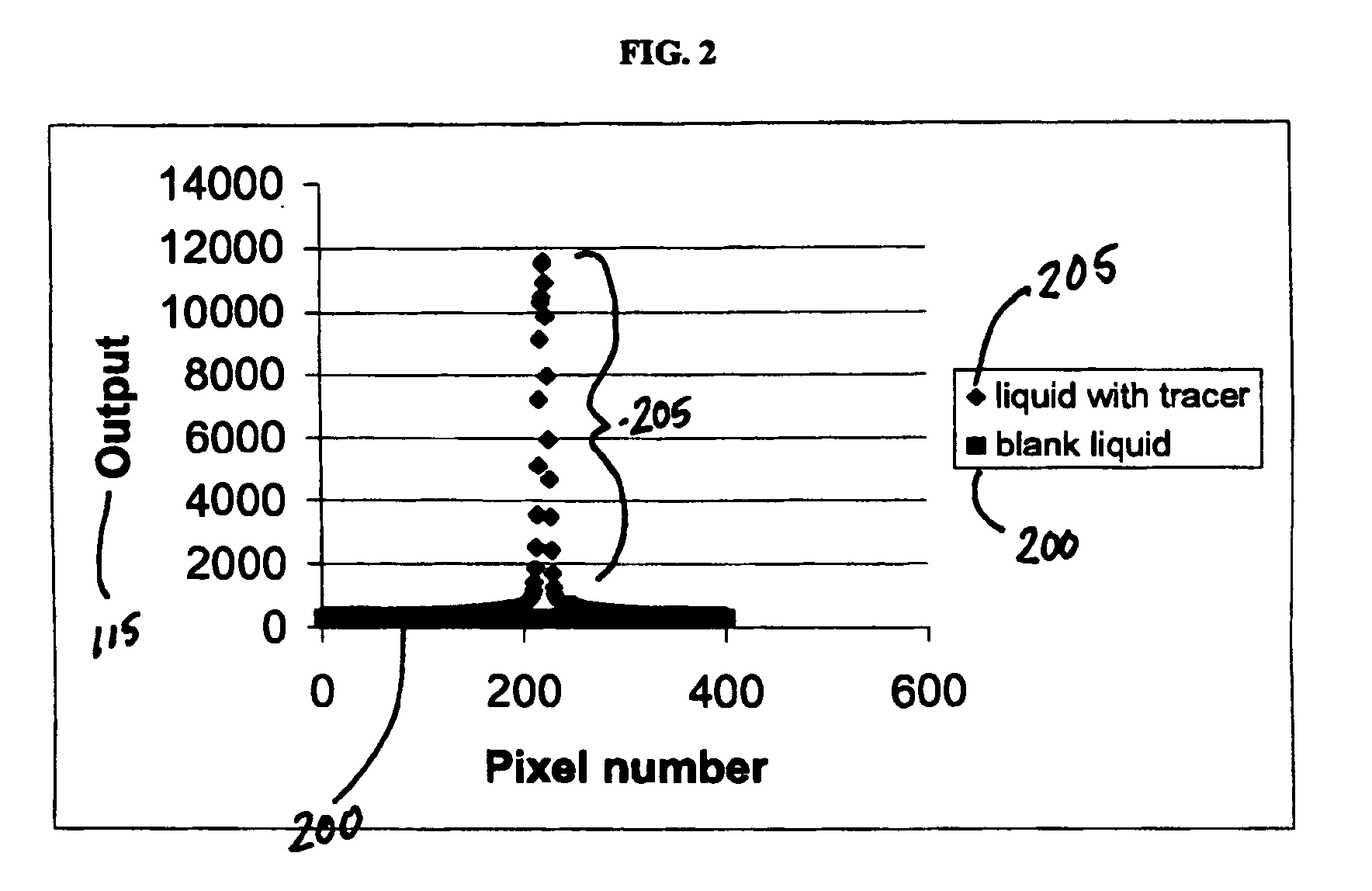Method and apparatus for monitoring liquid for the presence of an additive
- Summary
- Abstract
- Description
- Claims
- Application Information
AI Technical Summary
Benefits of technology
Problems solved by technology
Method used
Image
Examples
example 1
[0138] In the configuration of FIG. 5, near infrared (980 μm) laser excitation light source 550 (30 mW) (Phosphor Technology, Ltd, Essex, UK) was passed through an IR pass coloured glass filter 535 (Oriel, Surry, UK, Schott model No RG 830) and focused by a lens 555 into a fluorescence cell sample 50 (1 cm path length) (Hellma GmbH & Co KG, Müllheim, Germany) containing a liquid to which had been added an anti-Stokes marker (e.g., a rare earth oxide obtained from Phosphor Technology, Ltd, Essex, UK, Catalog No. PTIR660) at 0.1% (w / w) concentration. The marker used exhibited a red fluorescence when irradiated at 980 nm in anti-Stokes fluorescence.
[0139] The emitted light from the sample passed through a red light filter (˜685-695 nm) (e.g., Edmond Optics Ltd, York, UK, Catalog No.C43-089) 536 and was detected by the light detecting element 530, a CCD camera (Astrocam, Cambridge, UK, part No 4201-TE4 / A fitted with EEV 05-10 CCD chip 298×1 152 pixels 22.5 μm square) and two standard c...
example 2
[0141] In the configuration of FIG. 5, a near infrared (980 nm) laser excitation light source 550 (30 mW) (Phosphor Technology, Ltd, Essex, UK) was passed through an IR pass coloured glass filter 535 (Oriel, Surry, UK, Schott model No RG 830) and focused by a lens 555 into a fluorescence cell sample 50 (1 cm path length) (Hellma GmbH & Co KG, Müllheim, Germany) containing a liquid to which had been added an anti-Stokes marker (a rare earth oxide obtained from Phosphor Technology, Ltd, Essex, UK, Catalog No. PTIR545) at 0.1% (w / w) concentration. This marker exhibits a green fluorescence when irradiated at 980 nm in anti-Stokes fluorescence.
[0142] The emitted light from the sample 50 passed through a green light filter (˜510-590 nm) (Edmond Optics Ltd, York, UK, Catalog No.C46-151) 536 and was detected by the light detecting element 530, a CCD camera (Astrocam, Cambridge, UK, part No 4201-TE4 / A fitted with EEV 05-10 CCD chip 298×1 152 pixels 22.5 μm square) and two standard camera le...
example 3
[0144] In the configuration of FIG. 5, a near infrared (980 nm) laser excitation light source 550 (30 mW) (Phosphor Technology, Ltd, Essex, UK) was passed through an IR pass coloured glass filter 535 (Oriel, Surry, UK, Schott model No RG 830) and focused by a lens 555 into a fluorescence cell sample 50 (1 cm path length) (Hellma GmbH & Co KG, Müllheim, Germany) containing a liquid to which had been added an anti-Stokes marker (a rare earth oxide obtained from Phosphor Technology, Ltd, Essex, UK, Catalog No. PTIR475) at 0.1% (w / w) concentration. This marker exhibits a blue fluorescence when irradiated at 980 nm in anti-Stokes fluorescence.
[0145] The emitted light from the sample 50 passed through a blue light filter (˜410-490 nm) (Edmond Optics Ltd, York, UK, Catalog No.C46-149) 536 and was detected by the light detecting element 530, a CCD camera (Astrocam, Cambridge, UK, part No 4201-TE4 / A fitted with EEV 05-10 CCD chip 298×1 152 pixels 22.5 μm square) and two standard camera lens...
PUM
 Login to View More
Login to View More Abstract
Description
Claims
Application Information
 Login to View More
Login to View More - R&D
- Intellectual Property
- Life Sciences
- Materials
- Tech Scout
- Unparalleled Data Quality
- Higher Quality Content
- 60% Fewer Hallucinations
Browse by: Latest US Patents, China's latest patents, Technical Efficacy Thesaurus, Application Domain, Technology Topic, Popular Technical Reports.
© 2025 PatSnap. All rights reserved.Legal|Privacy policy|Modern Slavery Act Transparency Statement|Sitemap|About US| Contact US: help@patsnap.com



